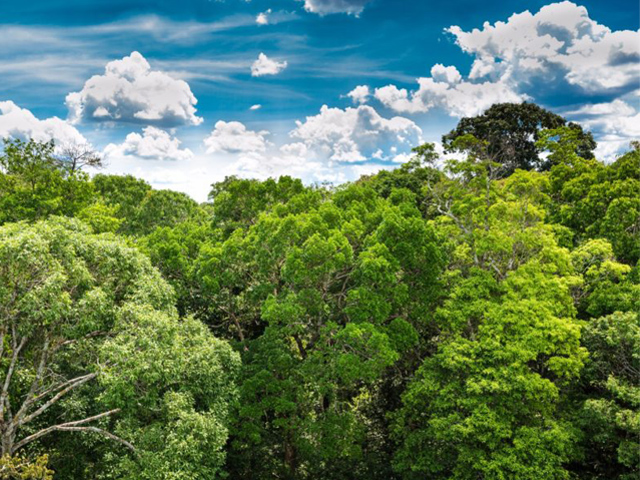REFORESTATION FINDS ITS ROOTS IN THE AMAZON
06 Nov 2017
The largest reforestation project ever conceived worldwide is set to take root in the Brazilian Amazon jungle with the aim to plant 73 million trees by 2023.

American non-profit environmental organisation, Conservation International, announced the project at the Brazilian Rock in Rio music festival in September 2017 and declared its goal to return the Amazon to its former glory. The trees will be planted in the “arc of deforestation”, the area that runs through the states of Amazonas, Acre, Pará, and Rondônia, and the Xingu watershed, with a short-term goal to restore 70,000 acres of the tropical forest. Scientists are concerned that 20 percent of the Amazonian forest could be deforested by 2040, in addition to the 20 percent that has been deforested since the 1970s.
Trees in the Amazon are especially important to the global climate; not only is the Amazon the largest tropical rainforest in the world, but its trees consume carbon dioxide and expel oxygen during photosynthesis. Halting deforestation will allow for the absorption of 37 percent of the world’s annual carbon emissions. 
“If the world is to hit the 1.2°c or 2°c [degrees of warming] target that we all agreed to in Paris, then protecting tropical forests in particular has to be a big part of that,” explains M Sanjayan, the CEO of Conservation International.
“It’s not just the trees that matter, but what kind of trees,” he continues. “If you’re really thinking about getting carbon dioxide out of the atmosphere, then tropical forests are the ones that end up mattering the most.”
In order to deal with this rapid decline of forestation, Conservational International is introducing new planting techniques that they believe can be used worldwide in order to reduce deforestation emissions globally. Their primary method is known as muvuca. This will involve thousands of native tree seeds from a wide variety of species to be planted across the deforested land. Natural selection will then choose those that are most suited to the land to grow and thrive. 
Deforestation at work in the Amazon rainforest
A study performed in 2014 by the Food and Agriculture Organisation and Biodiversity International found that more than 90 percent of native tree species planted using this method thrive and are able to survive drought conditions for up to six months.
Rodrigo Medeiros, Conservation International’s Vice President of the Brazil program and project lead, explains; “With plant-by-plant reforestation techniques, you get a typical density of about 160 plants per hectare. With muvuca, the initial outcome is 2500 species per hectare. And, after 10 years, you can reach 5000 trees per hectare. It’s much more diverse, much more dense, and less expensive than traditional techniques.” 
While this project is highly ambitious, it is also highly essential to the sustainability of, not only Brazil, but the world, and will greatly assist with reducing the effect of climate change.

MORE NEWS

GARDENIAS BLOOM AT PARADISE PLANTS

OZBREED'S NEWEST PLANTS

SQUEEZE ME IN: SCREENING TREES FOR NARROW SPACES

OZBREED'S GROUND HUG™ HAS WON SPECIALIST PLANT OF THE YEAR 2025!

HOW EARTHLIFE PRODUCTS HELP LANDSCAPERS AND BUSINESSES OVERCOME COMMON CHALLENGES

